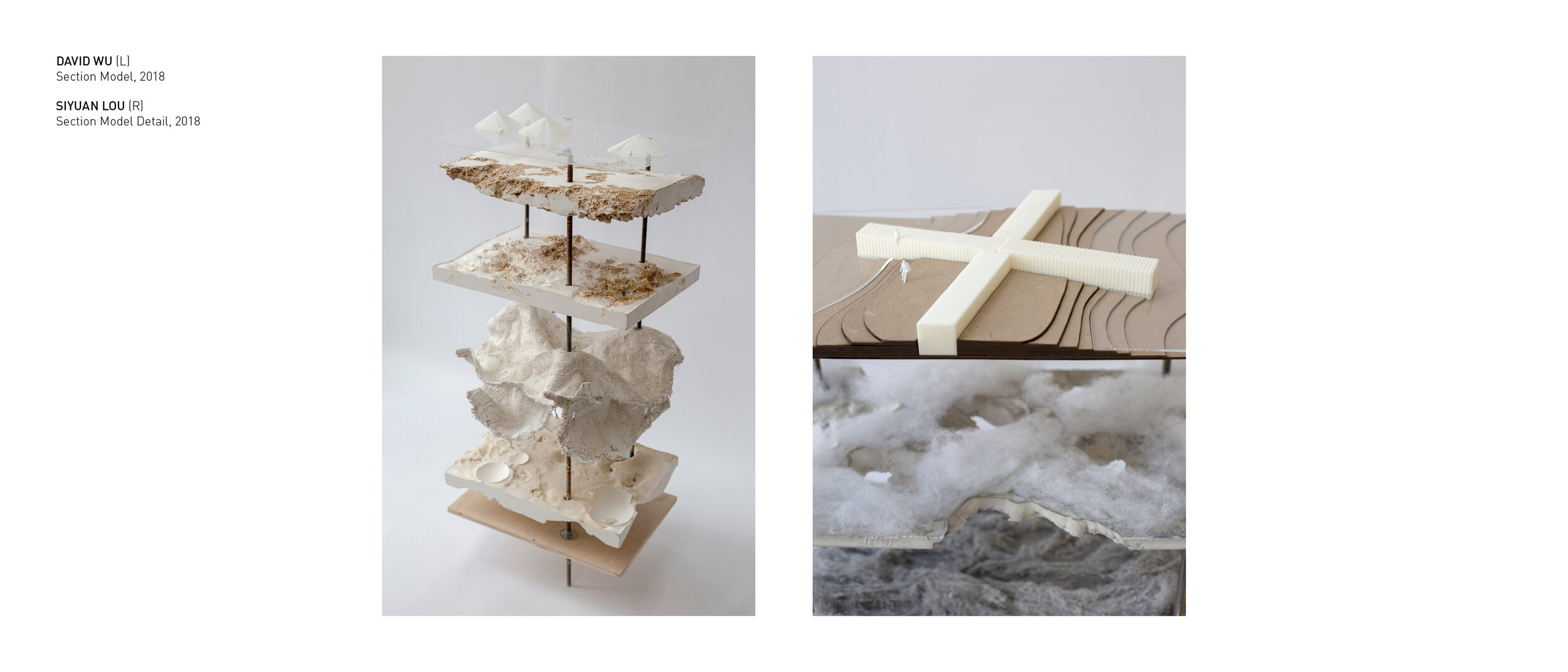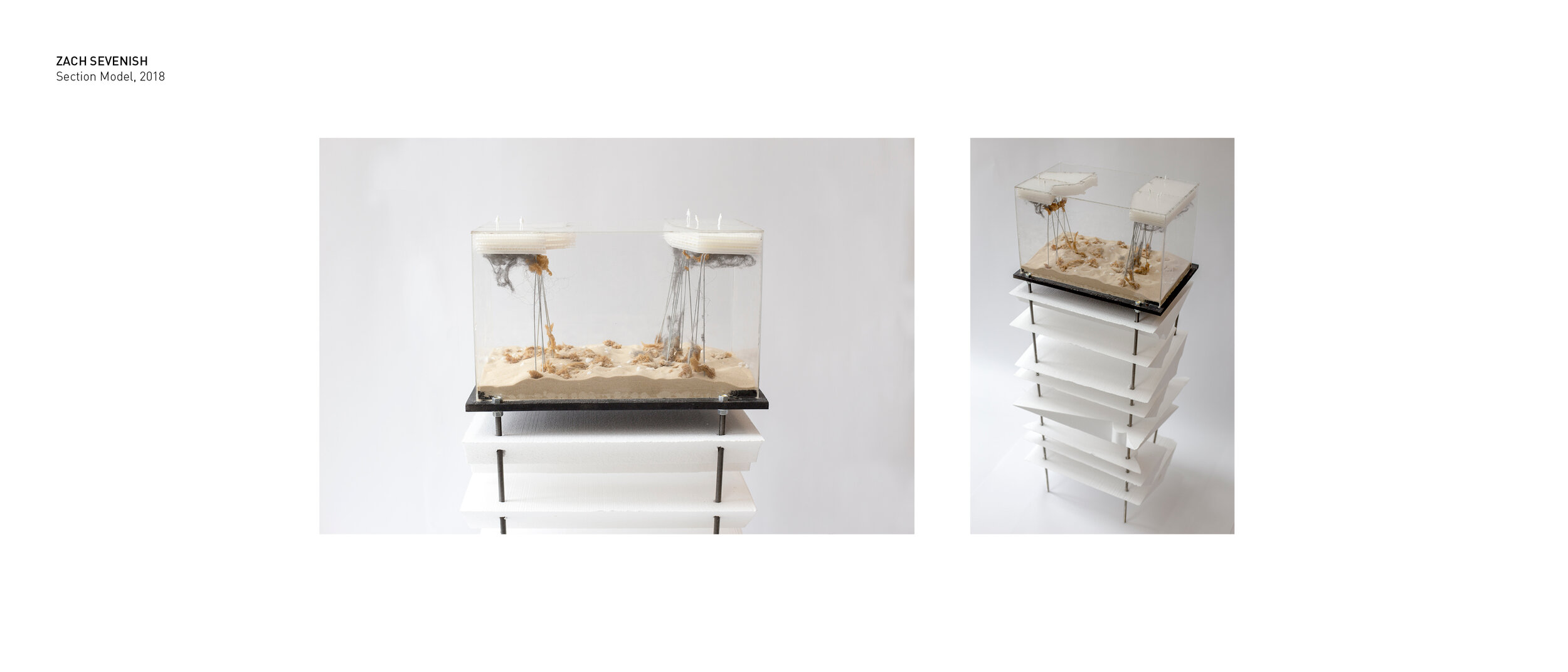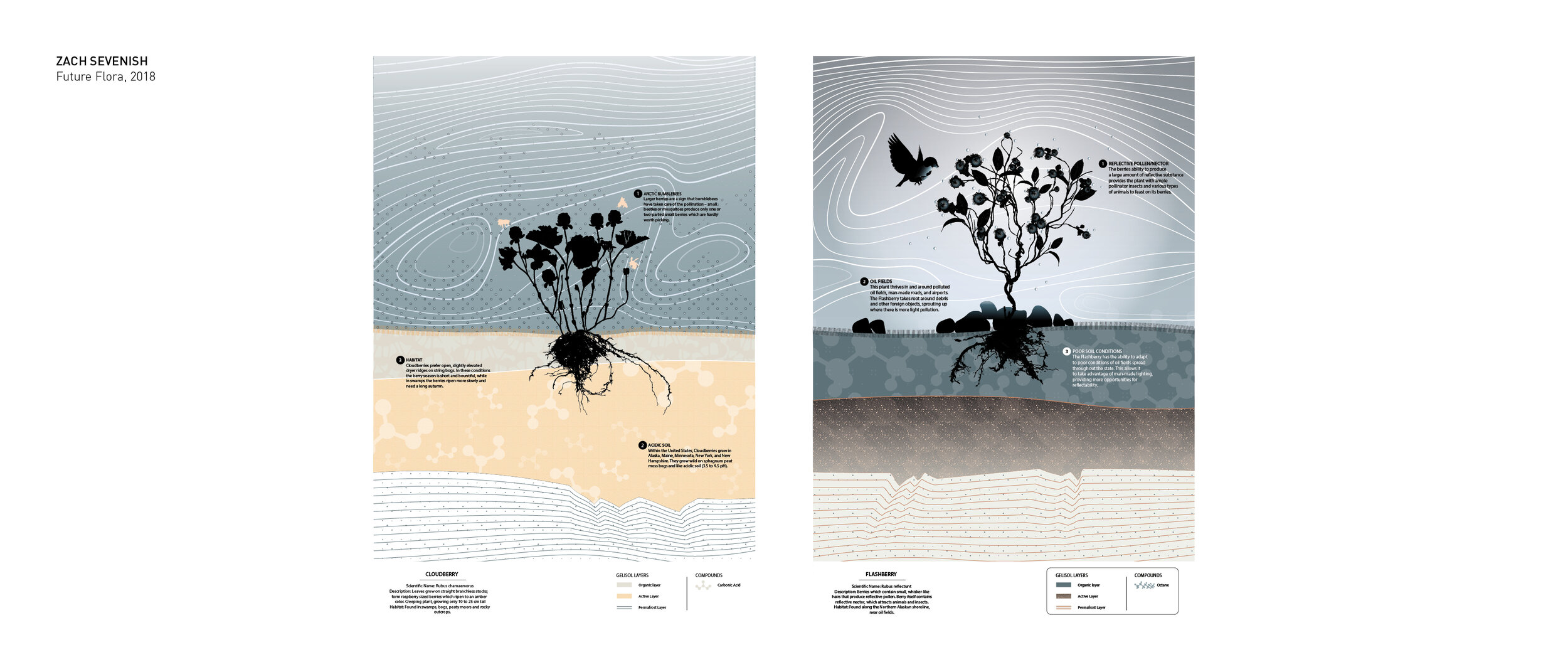THE ARCTIC ENTROPIC
Second-Year Graduate Studio, Landscape Architecture; The Knowlton School, The Ohio State University; Spring 2018
The Arctic Entropic studio centered on the entropic changes that are radically altering the Alaskan Arctic, including severe coastal erosion, thinning sea ice, melting permafrost, the exhaustion of Arctic oil and gas fields, the rapid release of methane gas and the loss of unique landscapes such as Arctic tundra due to atmospheric warming. Entropic change signifies an alteration that cannot be reversed. The Alaskan Arctic, defined socially and economically by resource extraction, typifies this—oil cannot be put back into the ground, permafrost cannot be reconstituted once thawed.
Our investigation focused on the region surrounding the town of Prudhoe Bay, Alaska, a locus of petrochemical activity and a geographic inflection point in America’s Arctic. Here, the air is warming at three times the speed of the continental U.S. and the landscape is reasserting itself, destabilizing human-made infrastructure that relies on predictable conditions.
Concurrent with this destabilization is the emergence of new landscapes and a potential surge in population and economic development due to vanishing sea ice and milder temperatures. Students researched the cold weather entropic processes transforming the grounds around Prudhoe Bay, hypothesized about the environments that will replace them, and made proposals for future land use within such speculative hybrid landscapes.
This studio also considered what conservation means in an era when boundary lines on a map are growing irrelevant and warming air, not terrestrial activity, is driving landscape change. Conservation was once about setting land aside—this method is no longer effective. How do we preserve landscapes that are vanishing?





